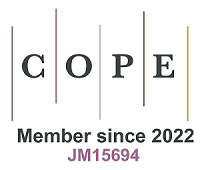REFERENCES
1. World Health Organization. Blindness and vision impairment. World Health Organization (Geneva, Switzerland), August 10, 2023. Available from https://www.who.int/news-room/fact-sheets/detail/blindness-and-visual-impairment [accessed 28 September 2025].
2. Fricke TR, Tahhan N, Resnikoff S, et al. Global prevalence of presbyopia and vision impairment from uncorrected presbyopia: systematic review, meta-analysis, and modelling. Ophthalmology. 2018;125:1492-9.
3. Beykin G, Norcia AM, Srinivasan VJ, Dubra A, Goldberg JL. Discovery and clinical translation of novel glaucoma biomarkers. Prog Retin Eye Res. 2021;80:100875.
4. Lin KY, Hsih WH, Lin YB, Wen CY, Chang TJ. Update in the epidemiology, risk factors, screening, and treatment of diabetic retinopathy. J Diabetes Investig. 2021;12:1322-5.
5. Bhedasgaonkar S, Nadkarni SU. Extent of glaucomatous damage on the first presentation. Oman J Ophthalmol. 2023;16:227-32.
6. Schwartz R, Loewenstein A. Early detection of age related macular degeneration: current status. Int J Retina Vitreous. 2015;1:20.
7. Krishnadas R. The many challenges in automated glaucoma diagnosis based on fundus imaging. Indian J Ophthalmol. 2021;69:2566-7.
8. Tan O, Chen A, Li Y, et al. Prospective evaluation of optical coherence tomography for disease detection in the Casey mobile eye clinic. Exp Biol Med. 2021;246:2214-21.
9. Cicinelli MV, Marmamula S, Khanna RC. Comprehensive eye care - issues, challenges, and way forward. Indian J Ophthalmol. 2020;68:316-23.
10. Niel G, Carter DRF, Clayton A, Lambert DW, Raposo G, Vader P. Challenges and directions in studying cell-cell communication by extracellular vesicles. Nat Rev Mol Cell Biol. 2022;23:369-82.
11. Momen-Heravi F, Balaj L, Alian S, et al. Impact of biofluid viscosity on size and sedimentation efficiency of the isolated microvesicles. Front Physiol. 2012;3:162.
12. Posa A, Bräuer L, Schicht M, Garreis F, Beileke S, Paulsen F. Schirmer strip vs. capillary tube method: non-invasive methods of obtaining proteins from tear fluid. Ann Anat. 2013;195:137-42.
13. Ravishankar P, Daily A. Tears as the next diagnostic biofluid: a comparative study between ocular fluid and blood. Applied Sciences. 2022;12:2884.
14. Torok Z, Peto T, Csosz E, et al. Tear fluid proteomics multimarkers for diabetic retinopathy screening. BMC Ophthalmol. 2013;13:40.
15. Rehman I, Hazhirkarzar B, Patel BC. Anatomy, head and neck, eye. In: StatPearls. Treasure Island (FL): StatPearls Publishing; 2023.
16. Shiju TM, Yuan A. Extracellular vesicle biomarkers in ocular fluids associated with ophthalmic diseases. Exp Eye Res. 2024;241:109831.
17. Bishop PN. Structural macromolecules and supramolecular organisation of the vitreous gel. Prog Retin Eye Res. 2000;19:323-44.
18. Angi M, Kalirai H, Coupland SE, Damato BE, Semeraro F, Romano MR. Proteomic analyses of the vitreous humour. Mediators Inflamm. 2012;2012:148039.
19. Zong Y, Gao QY, Hui YN. Vitreous function and intervention of it with vitrectomy and other modalities. Int J Ophthalmol. 2022;15:857-67.
20. Koss MJ, Hoffmann J, Nguyen N, et al. Proteomics of vitreous humor of patients with exudative age-related macular degeneration. PLoS One. 2014;9:e96895.
21. Hiller JK, Sandås EM, Rootwelt H, et al. Metabolomic biomarkers in vitreous humor: unveiling the molecular landscape of diabetic retinopathy progression. Int J Retina Vitreous. 2025;11:58.
22. Yu M, Xie F, Liu X, et al. Proteomic study of aqueous humor and its application in the treatment of neovascular glaucoma. Front Mol Biosci. 2020;7:587677.
23. Buffault J, Labbé A, Hamard P, Brignole-Baudouin F, Baudouin C. The trabecular meshwork: Structure, function and clinical implications. A review of the literature. J Fr Ophtalmol. 2020;43:e217-30.
24. Kaeslin MA, Killer HE, Fuhrer CA, Zeleny N, Huber AR, Neutzner A. Changes to the aqueous humor proteome during glaucoma. PLoS One. 2016;11:e0165314.
25. Fernández-Vega Cueto A, Álvarez L, García M, et al. Candidate glaucoma biomarkers: from proteins to metabolites, and the pitfalls to clinical applications. Biology. 2021;10:763.
26. Huang K, Schofield C, Nguy T, et al. Proteomics approach identifies aqueous humor biomarkers in retinal diseases. Commun Med. 2025;5:134.
27. Jin Y, Liu J, Zhang X, et al. Stage-dependent proteomic alterations in aqueous humor of diabetic retinopathy patients based on data-independent acquisition and parallel reaction monitoring. J Transl Med. 2025;23:476.
28. Khanna RK, Catanese S, Emond P, Corcia P, Blasco H, Pisella PJ. Metabolomics and lipidomics approaches in human tears: a systematic review. Surv Ophthalmol. 2022;67:1229-43.
29. Sheppard JD, Nichols KK. Dry eye disease associated with meibomian gland dysfunction: focus on tear film characteristics and the therapeutic landscape. ophthalmol ther. 2023;12:1397-418.
30. Zhou L, Beuerman RW. The power of tears: how tear proteomics research could revolutionize the clinic. Expert Rev Proteomics. 2017;14:189-91.
31. Aluru SV, Agarwal S, Srinivasan B, et al. Lacrimal proline rich 4 (LPRR4) protein in the tear fluid is a potential biomarker of dry eye syndrome. PLoS One. 2012;7:e51979.
32. Bao J, Tian L, Meng Y, et al. Total IgE in tears accurately reflects the severity and predicts the prognosis of seasonal allergic conjunctivitis. Clin Transl Allergy. 2022;12:e12139.
33. Liu J, Jiang F, Jiang Y, et al. Roles of exosomes in ocular diseases. Int J Nanomedicine. 2020;15:10519-38.
34. Kapnisis K, Doormaal MV, Ross Ethier C. Modeling aqueous humor collection from the human eye. J Biomech. 2009;42:2454-7.
35. Fan Z, Hu Y, Chen L, et al. Multiplatform tear proteomic profiling reveals novel non-invasive biomarkers for diabetic retinopathy. Eye. 2024;38:1509-17.
36. Ponzini E, Santambrogio C, De Palma A, Mauri P, Tavazzi S, Grandori R. Mass spectrometry-based tear proteomics for noninvasive biomarker discovery. Mass Spectrom Rev. 2022;41:842-60.
37. Colombo M, Raposo G, Théry C. Biogenesis, secretion, and intercellular interactions of exosomes and other extracellular vesicles. Annu Rev Cell Dev Biol. 2014;30:255-89.
38. Yáñez-Mó M, Siljander PR, Andreu Z, et al. Biological properties of extracellular vesicles and their physiological functions. J Extracell Vesicles. 2015;4:27066.
39. Welsh JA, Goberdhan DCI, O’Driscoll L, et al; MISEV Consortium. Minimal information for studies of extracellular vesicles (MISEV2023): from basic to advanced approaches. J Extracell Vesicles. 2024;13:e12404.
40. Radeghieri A, Bergese P. The biomolecular corona of extracellular nanoparticles holds new promises for advancing clinical molecular diagnostics. Expert Rev Mol Diagn. 2023;23:471-4.
41. García-Bernal D, García-Arranz M, Yáñez RM, et al. The current status of mesenchymal stromal cells: controversies, unresolved issues and some promising solutions to improve their therapeutic efficacy. Front Cell Dev Biol. 2021;9:650664.
42. Elliott RO, He M. Unlocking the power of exosomes for crossing biological barriers in drug delivery. Pharmaceutics. 2021;13:122.
43. Fais S, O’Driscoll L, Borras FE, et al. Evidence-based clinical use of nanoscale extracellular vesicles in nanomedicine. ACS Nano. 2016;10:3886-99.
44. Habibi A, Zarei-Behjani Z, Falamarzi K, et al. Extracellular vesicles as a new horizon in the diagnosis and treatment of inflammatory eye diseases: a narrative review of the literature. Front Immunol. 2023;14:1097456.
46. Anitua E, Muruzabal F, Tayebba A, et al. Autologous serum and plasma rich in growth factors in ophthalmology: preclinical and clinical studies. Acta Ophthalmol. 2015;93:e605-14.
47. Zhou L, Zhao SZ, Koh SK, et al. In-depth analysis of the human tear proteome. J Proteomics. 2012;75:3877-85.
48. Tham ML, Mahmud A, Abdullah M, et al. Tear samples for protein extraction: comparative analysis of schirmer’s test strip and microcapillary tube methods. Cureus. 2023;15:e50972.
49. Fu R, Klinngam W, Heur M, Edman MC, Hamm-Alvarez SF. Tear proteases and protease inhibitors: potential biomarkers and disease drivers in ocular surface disease. Eye Contact Lens. 2020;46 Suppl 2:S70-83.
50. Inubushi S, Kawaguchi H, Mizumoto S, et al. Oncogenic miRNAs identified in tear exosomes from metastatic breast cancer patients. Anticancer Res. 2020;40:3091-6.
51. Dartt DA, Willcox MD. Complexity of the tear film: importance in homeostasis and dysfunction during disease. Exp Eye Res. 2013;117:1-3.
52. Janssen PT, van Bijsterveld OP. Origin and biosynthesis of human tear fluid proteins. Invest Ophthalmol Vis Sci. 1983;24:623-30.
53. Zhou L, Beuerman RW. Tear analysis in ocular surface diseases. Prog Retin Eye Res. 2012;31:527-50.
54. Ohashi Y, Dogru M, Tsubota K. Laboratory findings in tear fluid analysis. Clin Chim Acta. 2006;369:17-28.
55. Ghaffariyeh A, Honarpisheh N, Shakiba Y, et al. Brain-derived neurotrophic factor in patients with normal-tension glaucoma. Optometry. 2009;80:635-8.
56. Thun Und Hohenstein-Blaul N, Funke S, Grus FH. Tears as a source of biomarkers for ocular and systemic diseases. Exp Eye Res. 2013;117:126-37.
57. Matheis N, Grus FH, Breitenfeld M, et al. Proteomics differentiate between thyroid-associated orbitopathy and dry eye syndrome. Invest Ophthalmol Vis Sci. 2015;56:2649-56.
58. Aass C, Norheim I, Eriksen EF, Thorsby PM, Pepaj M. Single unit filter-aided method for fast proteomic analysis of tear fluid. Anal Biochem. 2015;480:1-5.
59. Winiarczyk M, Kaarniranta K, Winiarczyk S, Adaszek Ł, Winiarczyk D, Mackiewicz J. Tear film proteome in age-related macular degeneration. Graefes Arch Clin Exp Ophthalmol. 2018;256:1127-39.
60. Eshaq RS, Aldalati AMZ, Alexander JS, Harris NR. Diabetic retinopathy: breaking the barrier. Pathophysiology. 2017;24:229-41.
61. Soria J, Acera A, Merayo-LLoves J, et al. Tear proteome analysis in ocular surface diseases using label-free LC-MS/MS and multiplexed-microarray biomarker validation. Sci Rep. 2017;7:17478.
62. Burgos-Blasco B, Güemes-Villahoz N, Santiago JL, et al. Hypercytokinemia in COVID-19: tear cytokine profile in hospitalized COVID-19 patients. Exp Eye Res. 2020;200:108253.
63. Holly FJ, Lamberts DW, Esquivel ED. Kinetics of capillary tear flow in the Schirmer strip. Curr Eye Res. 1982;2:57-70.
64. Witwer KW, Buzás EI, Bemis LT, et al. Standardization of sample collection, isolation and analysis methods in extracellular vesicle research. J Extracell Vesicles. 2013:2.
65. Bruszel B, Tóth-Molnár E, Janáky T, Szabó Z. Sources of variance in human tear proteomic samples: statistical evaluation, quality control, normalization, and biological insight. Int J Mol Sci. 2024;25:1559.
66. Gijs M, Arumugam S, van de Sande N, et al. Pre-analytical sample handling effects on tear fluid protein levels. Sci Rep. 2023;13:1317.
67. Sitaramamma T, Shivaji S, Rao GN. Effect of storage on protein concentration of tear samples. Curr Eye Res. 1998;17:1027-35.
68. Chiang JCB, Krishnan AV, Goldstein D, Markoulli M. The impact of post-tear collection storage on tear film substance P concentration. Curr Eye Res. 2022;47:1116-20.
69. Brott NR, Zeppieri M, Ronquillo Y. Schirmer Test. In: StatPearls. Treasure Island (FL): StatPearls Publishing; 2024.
70. Clos-Sansalvador M, Monguió-Tortajada M, Roura S, Franquesa M, Borràs FE. Commonly used methods for extracellular vesicles’ enrichment: implications in downstream analyses and use. Eur J Cell Biol. 2022;101:151227.
71. Abels ER, Breakefield XO. Introduction to extracellular vesicles: biogenesis, RNA cargo selection, content, release, and uptake. Cell Mol Neurobiol. 2016;36:301-12.
72. Konoshenko MY, Lekchnov EA, Vlassov AV, Laktionov PP. Isolation of extracellular vesicles: general methodologies and latest trends. Biomed Res Int. 2018;2018:8545347.
73. Lobb RJ, Becker M, Wen SW, et al. Optimized exosome isolation protocol for cell culture supernatant and human plasma. J Extracell Vesicles. 2015;4:27031.
74. Amorim M, Martins B, Caramelo F, et al. Putative biomarkers in tears for diabetic retinopathy diagnosis. Front Med. 2022;9:873483.
75. Shi TT, Zhao RX, Xin Z, et al. Tear-derived exosomal biomarkers of Graves’ ophthalmopathy. Front Immunol. 2022;13:1088606.
76. Grubisic Z, Rempp P, Benoit H. A universal calibration for gel permeation chromatography. J Polym Sci B Polym Lett. 1967;5:753-9.
77. Aqrawi LA, Galtung HK, Vestad B, et al. Identification of potential saliva and tear biomarkers in primary Sjögren’s syndrome, utilising the extraction of extracellular vesicles and proteomics analysis. Arthritis Res Ther. 2017;19:14.
78. Aqrawi LA, Galtung HK, Guerreiro EM, et al. Proteomic and histopathological characterisation of sicca subjects and primary Sjögren’s syndrome patients reveals promising tear, saliva and extracellular vesicle disease biomarkers. Arthritis Res Ther. 2019;21:181.
79. Gelibter S, Marostica G, Mandelli A, et al. The impact of storage on extracellular vesicles: a systematic study. J Extracell Vesicles. 2022;11:e12162.
80. Théry C, Witwer KW, Aikawa E, et al. Minimal information for studies of extracellular vesicles 2018 (MISEV2018): a position statement of the International Society for Extracellular Vesicles and update of the MISEV2014 guidelines. J Extracell Vesicles. 2018;7:1535750.
81. Asif M, Asif A, Rahman UA, et al. Incidence of glaucoma in type 2 diabetes patients treated with GLP-1 receptor agonists: a systematic review and meta-analysis. Endocrinol Diabetes Metab. 2025;8:e70059.
82. Craig JP, Nichols KK, Akpek EK, et al. TFOS DEWS II definition and classification report. Ocul Surf. 2017;15:276-83.
83. Dai X, Hui X, Xi M. Critical factors driving diabetic retinopathy pathogenesis and a promising interventional strategy. Biomed Pharmacother. 2025;189:118106.
84. Grigor’eva AE, Tamkovich SN, Eremina AV, et al. Characteristics of exosomes andmicroparticles discovered in human tears. Biomed Khim. 2016;62:99-106.
85. Manai F, Smedowski A, Kaarniranta K, Comincini S, Amadio M. Extracellular vesicles in degenerative retinal diseases: a new therapeutic paradigm. J Control Release. 2024;365:448-68.
86. Rossi C, Cicalini I, Cufaro MC, et al. Multi-omics approach for studying tears in treatment-naïve glaucoma patients. Int J Mol Sci. 2019;20:4029.
87. Pucker AD, Ngo W, Postnikoff CK, Fortinberry H, Nichols JJ. Tear film miRNAs and their association with human dry eye disease. Curr Eye Res. 2022;47:1479-87.
88. Cross T, Øvstebø R, Brusletto BS, et al. RNA profiles of tear fluid extracellular vesicles in patients with dry eye-related symptoms. Int J Mol Sci. 2023;24:15390.
89. Hu L, Zhang T, Ma H, et al. Discovering the secret of diseases by incorporated tear exosomes analysis via rapid-isolation system: iTEARS. ACS Nano. 2022;16:11720-32.
90. Pieragostino D, Agnifili L, Fasanella V, et al. Shotgun proteomics reveals specific modulated protein patterns in tears of patients with primary open angle glaucoma naïve to therapy. Mol Biosyst. 2013;9:1108-16.
91. Dinarello CA. Interleukin 1 and interleukin 18 as mediators of inflammation and the aging process. Am J Clin Nutr. 2006;83:447S-55S.
92. Xiao J, Xu Z. Roles of noncoding RNAs in diabetic retinopathy: mechanisms and therapeutic implications. Life Sci. 2024;357:123092.
93. Suire S, Lécureuil C, Anderson KE, et al. GPCR activation of Ras and PI3Kc in neutrophils depends on PLCb2/b3 and the RasGEF RasGRP4. EMBO J. 2012;31:3118-29.
94. Bresciani E, Saletti C, Squillace N, et al. miRNA-218 targets lipin-1 and glucose transporter type 4 genes in 3T3-L1 cells treated with lopinavir/ritonavir. Front Pharmacol. 2019;10:461.
95. Hagan S, Martin E, Enríquez-de-Salamanca A. Tear fluid biomarkers in ocular and systemic disease: potential use for predictive, preventive and personalised medicine. EPMA J. 2016;7:15.
96. Kaštelan S, Braš M, Pjevač N, et al. Tear biomarkers and Alzheimer’s disease. Int J Mol Sci. 2023;24:13429.
97. Pieragostino D, Lanuti P, Cicalini I, et al. Proteomics characterization of extracellular vesicles sorted by flow cytometry reveals a disease-specific molecular cross-talk from cerebrospinal fluid and tears in multiple sclerosis. J Proteomics. 2019;204:103403.
98. Salvisberg C, Tajouri N, Hainard A, Burkhard PR, Lalive PH, Turck N. Exploring the human tear fluid: discovery of new biomarkers in multiple sclerosis. Proteomics Clin Appl. 2014;8:185-94.
99. Boehm N, Funke S, Wiegand M, Wehrwein N, Pfeiffer N, Grus FH. Alterations in the tear proteome of dry eye patients - a matter of the clinical phenotype. Invest Ophthalmol Vis Sci. 2013;54:2385-92.
100. Lee S, Kim E, Moon CE, et al. Amplified fluorogenic immunoassay for early diagnosis and monitoring of Alzheimer’s disease from tear fluid. Nat Commun. 2023;14:8153.
101. Schneider F, Duong TA, Metz I, et al. Mutual functional dependence of cyclase-associated protein 1 (CAP1) and cofilin1 in neuronal actin dynamics and growth cone function. Prog Neurobiol. 2021;202:102050.
102. Zhong J, Ren X, Liu W, et al. Discovery of novel markers for identifying cognitive decline using neuron-derived exosomes. Front Aging Neurosci. 2021;13:696944.
103. Boerger M, Funke S, Leha A, et al. Proteomic analysis of tear fluid reveals disease-specific patterns in patients with Parkinson’s disease - a pilot study. Parkinsonism Relat Disord. 2019;63:3-9.
104. Park HY, Kim JH, Lee KM, Park CK. Effect of prostaglandin analogues on tear proteomics and expression of cytokines and matrix metalloproteinases in the conjunctiva and cornea. Exp Eye Res. 2012;94:13-21.
105. Bugara K, Pacwa A, Smedowski A. Molecular pathways in experimental glaucoma models. Front Neurosci. 2024;18:1363170.
106. Mallone F, Costi R, Marenco M, et al. Understanding drivers of ocular fibrosis: current and future therapeutic perspectives. Int J Mol Sci. 2021;22:11748.
107. Fotovat-Ahmadi N, Siddiqui O, Ong J, et al. The ocular surface tear film as a biomarker for systemic health. Ocul Surf. 2025;37:283-300.
108. Sampani K, Ness S, Tuz-Zahra F, et al. Neurodegenerative biomarkers in different chambers of the eye relative to plasma: an agreement validation study. Alzheimers Res Ther. 2024;16:192.
109. Tamhane M, Cabrera-Ghayouri S, Abelian G, Viswanath V. Review of biomarkers in ocular matrices: challenges and opportunities. Pharm Res. 2019;36:40.
110. Su Y, Chen M, Xu W, Gu P, Fan X. Advances in extracellular-vesicles-based diagnostic and therapeutic approaches for ocular diseases. ACS Nano. 2024;18:22793-828.
111. Phan N, Li Y, Yang M, Liu F. Tear fluid derived extracellular vesicles for new biomarker discovery. Ocul Surf. 2025;37:314-22.
112. Wen K, Fu M, Li Y, et al. The effect of age on aqueous humor of humans with high myopia. Mol Vis 2024;30:137-49.
113. Metayer C, Kodjikian L, Nguyen AM, et al. Interest of regular assays of aqueous humor interleukin-10 levels in monitoring of vitreoretinal lymphoma. Retina. 2024;44:1807-13.
114. Asakage M, Usui Y, Komatsu H, et al. Comprehensive microRNA analyses using vitreous humor of ocular sarcoidosis. Graefes Arch Clin Exp Ophthalmol. 2025;263:501-26.
115. Balikov DA, Brown NA, Elner VM, Wubben TJ, Rao RC, Demirci H. Posterior uveitis in ocular-involving chronic lymphocytic leukemia and the utility of negative MYD88 L265P testing in the diagnosis. Ocul Oncol Pathol. 2024;10:103-13.
116. Rentka A, Koroskenyi K, Harsfalvi J, et al. Evaluation of commonly used tear sampling methods and their relevance in subsequent biochemical analysis. Ann Clin Biochem. 2017;54:521-9.










